Windows and doors supplied by Viking Window are equipped with insulated glazing units. The glass industry is now developed to a level where the thermal conductivity of the double glazing is 1.1 W/m2K and of the triple glazing is between 0.5 ... 0.7 W/m2K.
The insulated glazing unit is made of glass panes (2 or 3), which are connected to each other with the spacer bar and hermetically sealed with a flexible sealant. The space between the glass panes (cavity) is usually filled with Argon gas. There may be glass panes with different thicknesses andy types used in the construction of an insulated glazing unit.
The glazing unit should be selected based on the specifics of a building, the circumstances of the surrounding and based on ones need regards functionality of windows. A glazing which is good for one building does not suit to the other.
Attention should be paid to the following features:
- Energy efficiency;
- Safety;
- Sound insulation;
- Sun protection.
Find out more from SGG Glass Flyer (PDF)
Energy efficiency
The energy efficient glazing can reduce heating costs. Metaphorically: one should not throw money out of the window.
With Viking windows and doors You can reduce heat losses by choosing the most suitable products with the best glazing available. We recommend to use SGG Swisspacer for warm edge solution. Argon filled cavities are Viking's standard solution.
Glazing unit with Argon filled cavity and selective (low-E) coating helps to increase energy efficiency (reduce thermal transmittance). The double glazing unit is equipped with one pane with low-E coating; the triple glazing unit has two glass panes with low-E coating. The Argon gas inside the cavity reduces convection inside the cavity. This type of glass heats up as fast as normal, but radiates less heat out of the room.
Thermal transmittance is expressed with U-value (Ug). Lower U-value means better insulation.
Safety
To increase safety for users laminated or toughened glass should be used.
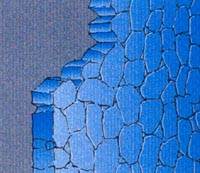 |
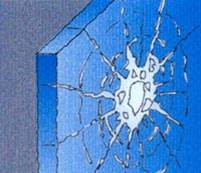 |
| Toughened glass | Laminated glass |
The lamination means that for one glassa pane two glasses are glued together with special film. If the glass breaks the film keeps pieces together. The toughened glass is manufactured by heating and fast cooling of the glass. As a result if breking it forms small particles. This way the risk of insures is minimized.
Sound insulation
For increased soud insulation glass panes with different thicknesses should be used in the glazing unit: 6 mm glasspanes and 8 mm laminated glass are the most common options.
Sunscreen
In spring and summer inside temperature can rise due to increased sunlight. In the buildings with a large glazed facades the amount of energy used for cooling can be bigger than heat demand. If You need or want to keep a lower temperature, sun protection glass should be used. This kind of glass is usually tinted, or with a special coating. Sunscreen selective ensures low solar factor and good thermal insulation at the same time.
Sun protection is indicated by the g-value (solar factor). The lower the g-value, the more stable the temperature of the room.
Properties of glazing units
Viking windows can be used in a wide range of glasses as described above. In a glass unit can be combined in different colors in glass and vitraažklaase.
Below are the Viking Window 2 times and 3 times the standard package, thermal glass (Ug) and solar radiation factor (g):
| Glazing specification | Ug | g |
| Regular glasses: | ||
| 2k4+4PlthUn-18Ar | 1,1 | 0,63 |
| 3k4PlthUn+4+4PlthUn-14/14Ar | 0,64 | 0,50 |
| Glazing for sound insulation and larger openings: | ||
| 2k6+4PlthUn-16Ar | 1,1 | 0,61 |
| 3k6PlthUn+4+6PlthUn-12/12Ar | 0,72 | 0,49 |
| Laminated glazing: | ||
| 2k44.1+4PlthUn-14Ar | 1,1 | 0,57 |
| 3k44.1PlthUn+4+4PlthUn-12/12Ar | 0,72 | 0,50 |
Stained Glasses
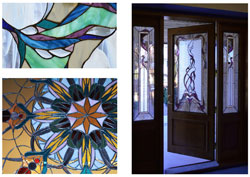 Download brochure: stained glasses (PDF 2.2 MB - Estonian/English)
Download brochure: stained glasses (PDF 2.2 MB - Estonian/English)
Classic stained glass
This technique is best described as what we are used to see in churches. It is the oldest technique in stained glass history and it has changed very little. With this technique coloured glass is used and every piece of glass is cut by hand. The pieces are assembled with H-shape lead came. After assembling the glass, lead came is soldered on both sides. This technique fits well with classic geometric and diamond patterns. This type of stained glass is best for restoration works and old historical buildings.
Tiffany stained glassTiffany stained glass
All the pieces are cut by hand from coloured glass. Cut edges are covered with self adhesive copper foil. After that pieces are laid side by side and copper foil is soldered. Coating connects the pieces. Tiffany technique allows very complex patterns with small details. This technique goes especially well with nature motives and flower patterns. Main visual difference compared to classic stained glass is that lead lines on tiffany glass vary throughout the work. Usually the lines are thinner than on classic stained glass.
Art film stained glass
For this type of stained glass the pattern covers one whole sheet of glass. First, self adhesive lead strips are laid on the glass according to a drawing. After that, the glass is turned over and coloured art film is laid where necessary. Edges of film are covered with lead strips according to lines below. Art film stained glass is visually quite similar to other types of stained glass. Art film stained glass does not deform in time, so larger areas can be covered with glass.
Frequently Asked Questions:
For How Long Argon Remains Inside Glazing Unit?
Glazing units are manufactured inside Argon environment. Glazing cavities are sealed with elastic material to hermetic separation from surrounding. The European quality standards for insulated glazing units allow the reduction rate maximum 1% a year for Argon. This means that during the lifetime of the window there is no significant decrease in thermal insulation.
Why Does the Condensation Occur?
Condensation is a natural phenomenon which hapens as a solution of temperature drop below the dew point. Usually there is always some water vapor in the air. When the temperature of the objects and the air is lower then the dew point, condensation occurs.
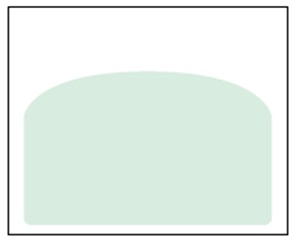 |
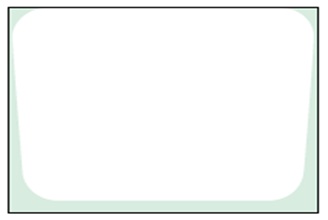 |
|
|
External condensation is caused by cooling of the external glass pane. Condesation occurs in the middle area of the glazing. Mostly it happens during spring and autumn when the air humidity is higher and the air temperature lower. In some extreme situations during winter it may happen that external surface of the glazing is coverd with ice for a short period. Although it may seem unpleasant external condensation is actually an indication of high energy efficiency - internal heat does not warm the external glass pane. |
Internal condensation is caused by high internal air moisture and cooler glazing surface. Mostly it starts on the bottom edge of glass. Internal condensation is a complex matter with many causes including internal air moisture, room temperature, internal air convection, ventilation, heating system etc. |
Why Choose SGG Swisspacer?
The practical result of choosing SGG Swisspacer is lower risk for internal condensation.
The spacer bar inside glazing unit is responsible for the linear thermal transmittance. It forms a cold bidge. To reduce heat loss in glazing edge area materials with lower thermal conductivity should be used. SGG Swisspacer with its plastic is one example of warm edge technology applied to improve thermal comformt.
 EST
EST ENG
ENG SWE
SWE Norwegian bokmål (Norway)
Norwegian bokmål (Norway)